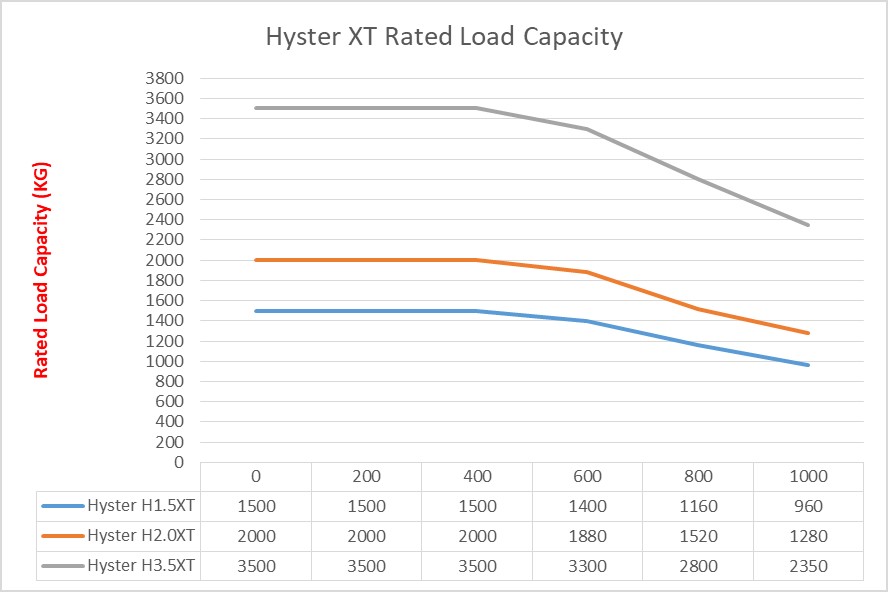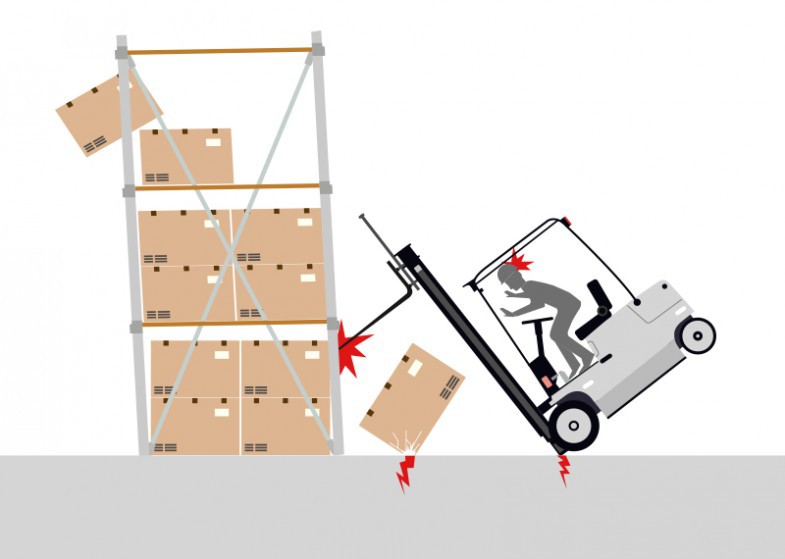How to Read a Forklift Load Capacity Chart
It is often assumed that forklifts are able to lift their maximum load capacity up to their maximum lift height.
This assumption is incorrect as the higher the load needs to be lifted the less capacity a forklift is able to lift, the reduction in load capacity is due to maintaining the stability of the unit during the lift to prevent the forklift becoming unbalanced and potentially tipping over and causing injuries or damage.
This blog provides a brief explanation on how to interpret a forklift load capacity chart to ensure the unit is not pushed beyond its safe operating capabilities.

Load Centre (MM)
The load centre is the balance point of a load, where it is evenly balanced whilst sitting on the forklifts tynes with one end firmly sitting up against the carriage backrest.
The load centre of a forklift is measured from the base of the tynes that butt up to the carriage backrest and then extends out towards the tyne tips.
Similar to a see-saw the further away from the base of the tynes and carriage backrest a loads centre of gravity the less stable the load becomes increasing the chances it may cause the forklift to overbalance and tip over when lifted to an extended height.
To reduce the potential for a forklift becoming top heavy and tipping over manufacturers reduce the safe lifting load capacity a forklift is able to lift the further the load centre moves towards the tyne tips to maintain the stability of the unit.
Rated Load (KG)
The rated load is the manufacturer specified safe lifting capacity of the forklift based on a specified load centre.
It is imperative operators do not exceed a forklifts safe rated load during operations or they risk increasing the likelihood of the unit becoming top heavy and tipping over which may lead to a number of negative impacts including:
- Operator injury or fatality
- Surrounding area worker injury or fatality
- Load damage or product loss
- Capital equipment damage to the forklift or racking
A forklifts safe lifting rated load is always calculated on the presumption that the mast and tynes are completely vertical and not tilted, if the tynes are tilted this will further reduce the safe load capacity.
Hyster H3.5XT Example
The above example load chart diagram for the Hyster 3.5XT forklift for load centres up to 400mm where the load balance point is 400mm away from the carriage towards the tips of the tynes the unit safe rated load is its full load capacity of 3,500kg.
The further towards the tynes tips the load centre moves the safe rated load capacity decreases to ensure the forklift stays balanced whilst lifting loads, to the point where the units capacity is reduced by up to one third to a safe load capacity of only 2,350kg for a load centre of 1,000mm.

This week’s blog provides a brief explanation on how to safely interpret a forklifts load capacity.
It is imperative that forklift owners and operators are fully aware that the load they’re trying to lift is compliant with the units safe load capacity before beginning lifting operations to reduce the likelihood of the unit tipping over.
For help interpreting your forklifts safe load capacity to ensure you have the correct forklift for your application contact our team of experts on 13 22 54 or fill out a contact form and we will respond as soon as possible.